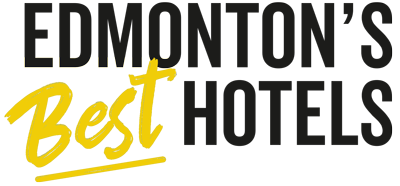Edmonton stands out for many reasons: its incredible nightlife, the dozens of exciting festivals throughout the years, the world-class shopping, and, of course, its lush, natural landscapes that host a variety of animal sanctuaries and wildlife spots. These sanctuaries provide a haven for wildlife, offering residents and visitors a unique opportunity to connect with nature and learn about local and exotic animals in a conservation-focused environment. Diving into Edmonton’s animal sanctuaries is an educational journey, experiencing firsthand the efforts to protect and preserve wildlife in their natural habitats.
Whether you’re passionate about wildlife, eager to expand your knowledge, or looking for unique wildlife experiences, Edmonton promises unforgettable encounters with all the wildlife you could possibly wish for. Remember, by supporting our city’s conservation efforts, you play a part in safeguarding these precious ecosystems for future generations, making every visit not just an adventure but a contribution to a greater cause.

Edmonton Valley Zoo
At the heart of Edmonton’s commitment to wildlife and nature conservation is the Edmonton Valley Zoo. This sanctuary is home to over 350 animals and engages in significant conservation efforts both locally and internationally, including the global “Year of the Frog” initiative, aiming to prevent the extinction of frogs, the Red Panda Network, Polar Bears International, and the Makira Conservation Fund. It also supports various programs and organizations, such as the Wildlife Conservation Society, The Snow Leopard Trust, and The Amphibian Ark, showcasing its dedication to preserving biodiversity.
Through innovative practices like water conservation, capturing and treating stormwater, and utilizing low-flow water fixtures, the zoo saves over 400,000 litres of water annually. The visitor experience is enriched with daily animal talks, where experts share knowledge about different species. Unique exhibits like the Polar Extremes allow close observation of seals, sea lions, and arctic foxes. The zoo also offers a range of educational programs for all ages, including school programs, workshops, and summer camps, emphasizing the importance of conservation and wildlife protection.
The Wildlife Sanctuary
In the heart of Alberta, the Alberta Institute for Wildlife Conservation (AIWC) offers hope to injured and orphaned wildlife. With an incredible 100% success rate in black bear cub rehabilitation, AIWC proudly released a trio of black bear cubs back into the wild in fall 2023, symbolizing the strength and effectiveness of their programs.
Larch Sanctuary is another testament to the city’s commitment to urban wildlife conservation, housing a diverse range of species from mammals to waterfowl. This sanctuary is not only a wildlife corridor but also a place of significant cultural importance to Indigenous communities. Through the efforts of organizations like EALT – which has installed structures like bee hotels and bat boxes – Edmonton continues to foster rich biodiversity within its city limits, making it an integral part of the city’s natural heritage and a must-visit for all who love wildlife.
Nature Reserves and Their Ecosystems
Exploring Edmonton’s natural reserves offers a unique insight into the region’s ecosystems and the efforts to preserve them. Here are three key areas contributing significantly to Edmonton’s ecological diversity and conservation:
- Edmonton and Area Land Trust (EALT) Conservation Efforts:
- Mission: Dedicated to conserving natural areas to benefit wildlife and people in the Edmonton region.
- Achievements: Successfully secured 17 natural areas, most of which welcome the public and showcase the beauty and diversity of Edmonton’s natural landscape.
- Get Involved: Opportunities abound for those looking to contribute, from volunteering and donating to partnering on conservation projects, ensuring the ongoing protection and appreciation of these spaces.
- The River Valley Wildlife Corridor:
- Size and Scope: Encompasses 7,400 hectares, featuring 160 kilometres of trails, 22 ravines, 20 major parks, 11 lakes, and the North Saskatchewan River.
- Importance: Acts as a critical passage for wildlife, promoting biodiversity by enabling animals to find new sources of shelter, food, and safer passage.
- Elk Island National Park:
- Location and Wildlife: Just 35 minutes from Edmonton, this park is a sanctuary for plains and wood bison, elk, moose, and deer, offering a plethora of activities, including camping, hiking, and wildlife viewing.
- Biodiversity: Home to over 250 species of birds and various mammals, Elk Island National Park is a prime example of Edmonton’s commitment to wildlife conservation and is the perfect spot for nature lovers.

Educational Programs and Conservation Efforts
The city’s commitment to wildlife conservation is evident through a variety of educational programs and conservation efforts that aim to protect and preserve the natural habitat for future generations. Here’s a closer look at some of the initiatives:
Educational Programs:
- AIWC Educational Programs: AIWC offers a range of wildlife education programs, including “Alberta Bear Care,” “Birds of Prey,” and “Wildlife Rescue,” among others. The programs use props, puppets, and PowerPoint slides for an engaging learning experience and are tailored for all ages and abilities. Be sure to check the website before venturing out to one of their programs, as the cost may vary based on location and audience size.
- University of Alberta: UofA provides a Bachelor of Science in Environmental and Conservation Sciences, specializing in Wildlife and Rangeland Conservation. The university enriches student life with over 400 clubs and offers significant scholarship opportunities.
- Lakeland College: Known for its hands-on education approach, it offers programs in environmental sciences, including Wildlife and Fisheries Conservation. Students get real-world experience through the Student-Managed Farm and other immersive projects.
Conservation Efforts:
- Edmonton & Area Land Trust: This organization works tirelessly to protect river valley land by placing easements on land titles, ensuring these areas remain unchanged and conserved for wildlife and future generations.
- Métis Crossing: Provides an immersive “Walk in Our Mocs: Archery Program” that introduces traditional ways of identifying plant and wildlife species, alongside offering authentic cultural experiences.
Supporting Wildlife Conservation in Edmonton
Supporting wildlife conservation in Edmonton is a comprehensive and dynamic process that intertwines scientific research, community participation, and sustainable urban planning. The city’s commitment to maintaining its natural heritage is exemplified through initiatives like the WildEdmonton Project, which employs remote cameras to monitor local wildlife populations. This project has been instrumental in identifying wildlife habitats, and aiding in the strategic planning of land use to preserve biodiversity.
Plan Edmonton, the city’s strategic framework for urban development, exemplifies how conservation can be integrated with growth and infrastructure planning. By aligning development goals with ecological preservation, Edmonton ensures that natural spaces are not only protected but also thoughtfully incorporated into the urban landscape.
The Special Places Initiative takes this a step further by promoting a balanced approach to preserving natural areas for recreational and educational purposes. This initiative ensures that residents and visitors can enjoy and learn from these environments without compromising their ecological integrity.
WILDNorth plays a vital role in the city’s wildlife conservation efforts, offering services like WILD Care for urgent animal care, WILD Rescue for emergency wildlife interventions, and WILD Education to raise public awareness and foster a connection with nature. These programs aid in the immediate care of wildlife as well as contribute to a broader understanding and appreciation of local ecosystems.
Through these concerted efforts, Edmonton demonstrates a profound dedication to preserving the unique wildlife and natural habitats throughout the city and beyond. This commitment helps sustain the city’s ecological health and provides future generations with the opportunity to experience and cherish the natural world.

From the educational efforts of the Edmonton Valley Zoo to the hands-on approaches of Elk Island National Park and the Alberta Institute for Wildlife Conservation, Edmonton showcases its unyielding commitment to preserving nature for future generations. These efforts enrich our understanding of the natural world and emphasize the active role each visitor and local can play in conservation.
As we reflect on the importance of these sanctuaries, it becomes clear that experiencing Edmonton’s wildlife is both a privilege and a call to action. Supporting wildlife conservation efforts, whether through visits, donations, or volunteer work, ensures the vitality of these habitats for years to come. For those eager to witness the natural wonders Edmonton has to offer, booking your stay through Edmonton’s Best Hotels allows you to embrace the city’s natural heritage while benefiting from our 1, 2, 3 Reward Deal, where you’ll get up to $225 in rewards just for staying in one of our luxurious member hotels. Let’s collectively cherish and protect these treasures, contributing to a legacy of conservation that defines Edmonton’s heart and soul.
Know someone to explore the wildlife of Edmonton with you? Share this post with them!







